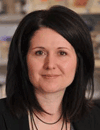|
Formulation Strategies |
| |
09:30 | Drug Delivery Systems Designed in-silico
Jamshed Anwar, Professor, University of Bradford, United Kingdom
I shall review the reasons why computer modelling is still relatively un-exploited by the pharmaceutical sector, give details of the methods with selected applications including prediction of solid state properties such as solubility, and then give a perspective for the future. |
10:00 | CANCELLED - Advancing Formulation Development in Drug Discovery : A Novel High Throughput Screening Approach
Alan Wilson, Vice President, Lexicon Pharmaceuticals, United States of America
In my presentation, I will cover the following topics 1) Discovery formulations: changing the formulation paradigm 2) Impact of excipients and solubility on oral bioavailability 3) A novel, high throughput formulation screening method adapted to the discovery environment 4) The Impact of early formulation screening on Pharmacokinetic & Pharmacology. |
10:30 | Coffee Break and Networking in the Exhibition Hall |
11:15 | Design of Crystallisation for Targeted Drug Dissolution
Zoltan Nagy, Professor, University of Loughborough, United Kingdom
Novel model-based and model-free crystallisation control approaches will be presented, which are based on real time feedback control systems using process analytical technologies that allow the design of crystal size distribution and shape to achieve a desired in vivo or in vitro dissolution of the drug. |
11:45 | Prediction of in vivo Performance: Tools for Accurate IVIVCs
Nikoletta Fotaki, Lecturer, University of Bath, United Kingdom
The pros and cons of several methods used for the prediction of the in vivo performance from early to late stage of drug development will be discussed. The factors that need to be taken into account for a predictive in vitro testing will be described and practices for the development of in vitro-in vivo relations and in vitro-in vivo correlations in several stages of development will be presented. Case studies and examples will be included in the presentation. |
12:15 | Lunch and Networking in the Exhibition Hall |
13:30 | Poster Session |
|
Optimisation of Bioavailability Through Formulation |
| |
14:15 | Third Generation Solid Dispersions as a Strategy to Improve Drug Bioavailability
Teofilo Vasconcelos, Researcher/Formulation Scientist, Laboratorios BIAL, Portugal
The third generation of solids dispersions are one of the most promising technologies that may allow the administration of poor water soluble drugs in a reliable and consistent manner, improving their bioavailability. |
14:45 | Methods to Improve Bioavailability in Oral Dispersible Tablets (ODTs)
Rosie McLaughlin, Technical Director, Catalent Pharma Solutions, United States of America
The majority of orally disintegrating tablets (ODTs) despite their fast disintegration times exhibit bioequivalence to conventional oral tablets. This presentation will show how lyophilized ODTs can offer flexibility in formulation design to improve oral bioavailability. |
15:15 | Coffee Break and Networking in the Exhibition Hall |
15:45 | Application of Imaging Techniques to Oral Dosage Forms. Examples of in-situ Imaging
Paolo Avalle, Senior Research Chemist, Merck, Switzerland
Modern formulation efforts not only are devoted to improve the solubility of the drugs with effective formulation strategies but also to tune the drug
release profile to meet the desired pharmacokinetic criteria. This talk will be based on the characterization of drug-polymers system either as a way to improve solubility but also to change the mechanism of drug release. The focus will be on imaging characterization techniques.
|
|
Patient Centric Drug Development |
| |
16:15 | Do not Forget the Patient - Product Design Strategies for Patient Centric Drug Delivery
Sven Stegemann, Director, Capsugel, Belgium
Drug therapy includes a patient suffering from a disease and a therapeutic drug targeted against this disease. Patient centric drug delivery is converting the therapeutic moiety into a drug product that is appropriate for the patients needs, especially within the pediatric and geriatric patient population. |
16:45 | Close of Conference |
